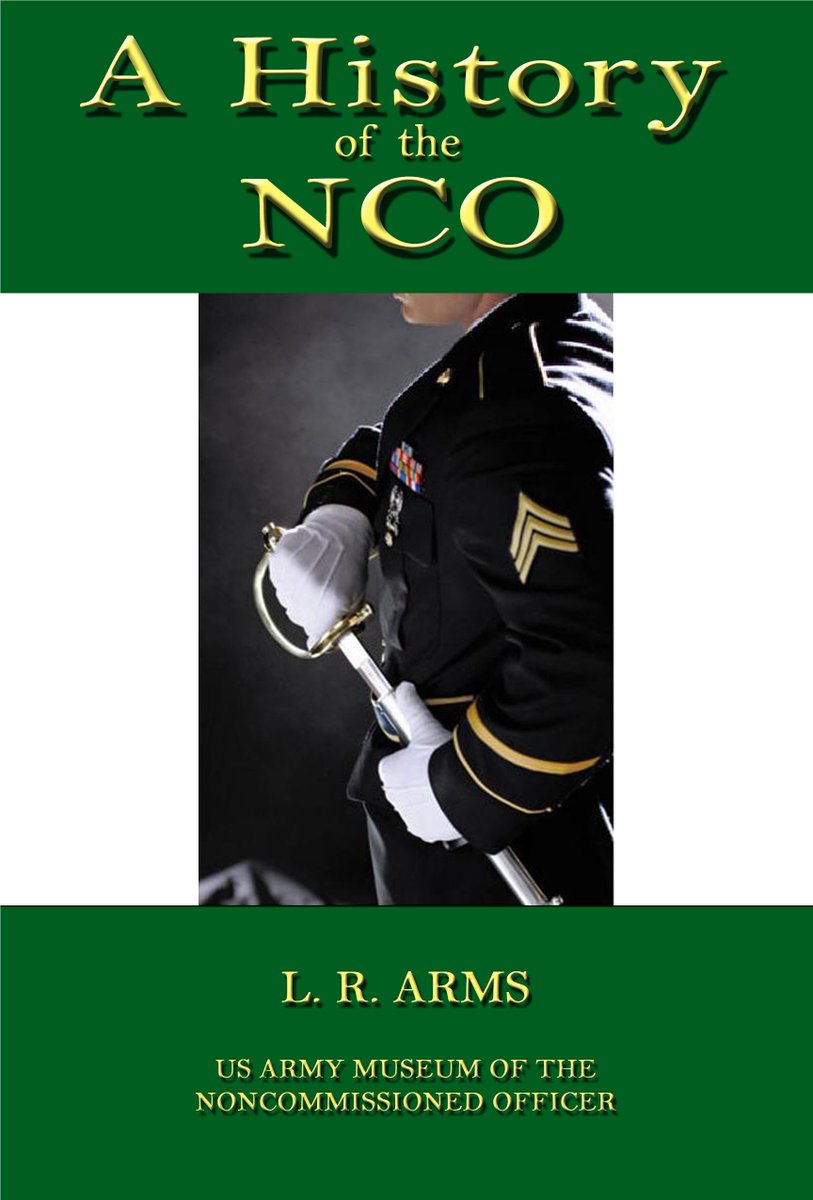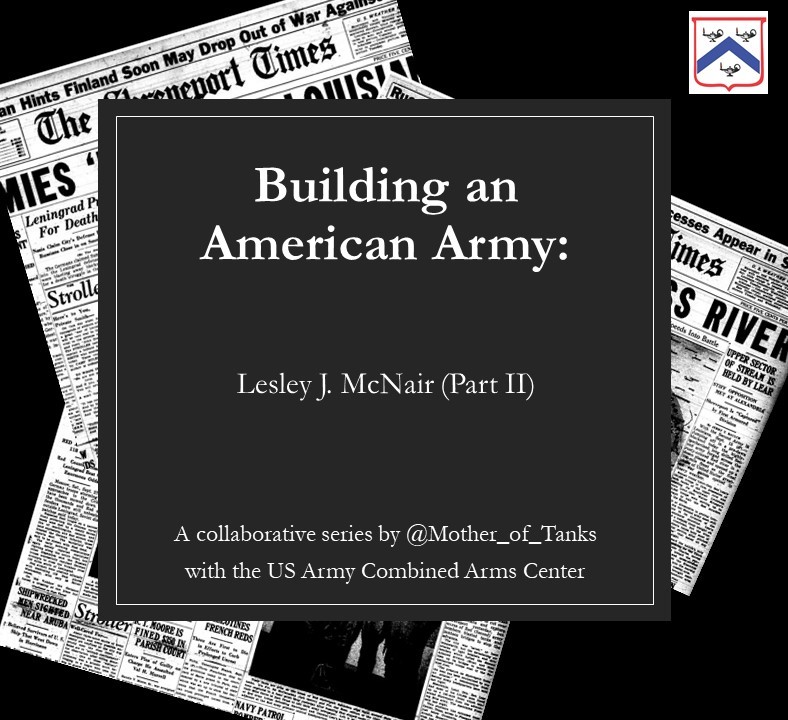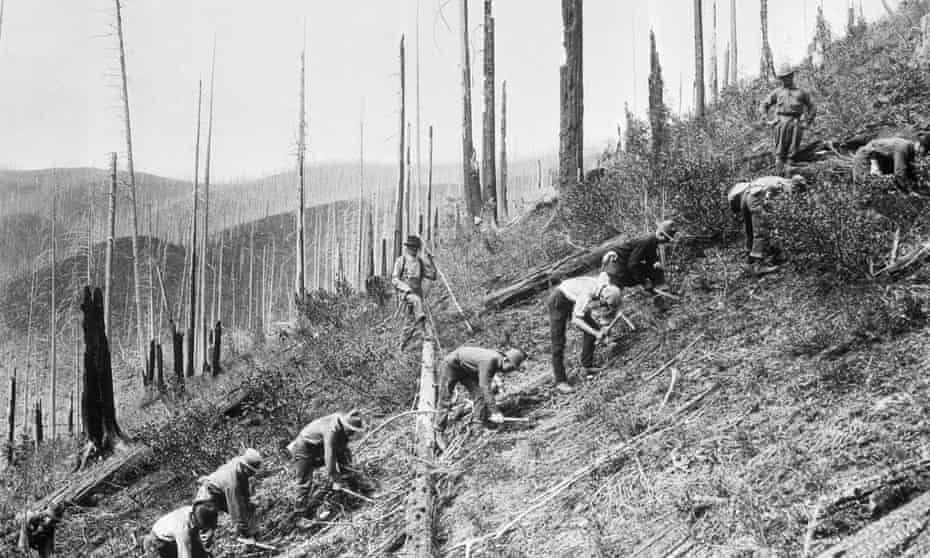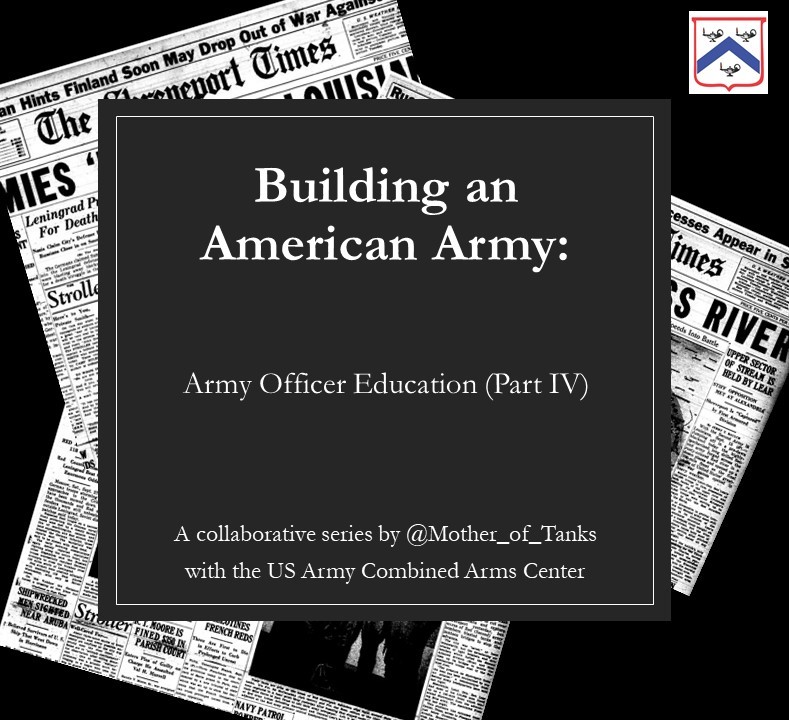
The Army demobilized relatively quickly after WWI ended, over a period of 5 years or so. Those soldiers that were retained faced potential rollercoasters in their career progression.
In "A History of the NCO" the author shares a story of Alexander Loungeway as an example of this – Loungeway served 32 years in the @USArmy – beginning in 1908, he was promoted to First Lieutenant during WWI, then reverted back to First Sergeant later.
army.mil/article/22117/…
army.mil/article/22117/…
Loungeway would later be a Sergeant, a Corporal, and a Private First Class, then promoted to Corporal again the year before he retired from service. All of his raters called him “excellent.”
There were two factors that affected soldiers like Loungeway at the time.
First – soldiers received their promotions from their regiments. So if one regiment “owned the stripes” there was a chance the soldier would be reverted to a previous rank if transferred elsewhere in the Army or if the unit was deactivated.
Enlisted soldiers were not guaranteed to keep their rank when they PCS (Permanent Change of Station) until 1940.
The other factor is that the Army scheduled to cut 1600 NCOs in 1922 in an effort to save money. For NCOs, especially those with families, this was a significantly difficult time. The Great Depression didn’t help either.
The Depression brought issues with pay, such as enlisted soldiers receiving only half of their salary, “or half the salary in money and the other half in consumer goods or food.”
From the 1930s until 1948, the Army had a “technician” grade of 3, 4, or 5 which were equivalent to Staff Sergeant (SSG), Sergeant (SGT), and Corporal (CPL) except the chevrons had a “T” to indicate “technician”. 

“Pay from any one of 213 vocational skills could add $3 to $35 to the enlisted man’s monthly pay.”
Although “equivalent” to SSG, SGT, and CPL, these technicians were not considered NCOs. But because of their specialties, they were able to progress more rapidly in rank. Those technicians who were actual “leaders of men” were considered NCOs. 

With the attack on Pearl Harbor in 1941, the US Army faced a need to expand rapidly while simultaneously training recruits and draftees to be effective soldiers. In order to make this happen, the Army relied heavily on experienced NCOs. 

Mobilization increased the size of the military, and with it the size of the NCO Corps. In 1941, the number of NCOs in the @USArmy was about 20% of the total force. By 1945, this had increased to almost 50% of the Army.
Of course, with oversaturation we saw a decrease in “shininess” – there were so many NCOs that the prestige associated with being a Non-Commissioned Officer had dulled a bit, at least for certain NCO ranks.
Changes to the Army’s organization gave NCOs new challenges to meet. The 8-man Infantry Squad increased to 12, and the Sergeant (E-5) replaced the Corporal (E-4) as a squad leader, diminishing the significance of the Corporal rank at the time.
Basic Training focused on practical hands-on experience rather than classroom learning, and NCOs were responsible for training all of the recruits and draftees. 





Women were formally welcomed into the @USArmy in 1942 and by the end of the war there were 90,000+ women who had enlisted. @AccidentalE9 @16thSMA 







Now, since the scope of this series is mostly focused on the period before WWII, 1939-1941, we won’t go too much into post-WWII topics. But it was in 1945 that Congress decided enlisted soldiers with 20-29 years of service were entitled to retirement.
As promised, here are some of the resources used to write the threads on NCOs:
“A History of the NCO” by L. R. Arms, US Army Museum of the Noncommissioned Officer
ncohistory.com/files/NCO_Hist…
“A History of the NCO” by L. R. Arms, US Army Museum of the Noncommissioned Officer
ncohistory.com/files/NCO_Hist…

“The Story of the Noncommissioned Officer Corps” by David W. Hogan Jr, Robert K. Wright Jr, and Arnold G. Fisch Jr. @USArmyCMH
history.army.mil/html/books/non…
history.army.mil/html/books/non…

“The Organization of Ground Combat Troops” by Ken Roberts Greenfield, Robert R. Palmer, and Bell I. Wiley @USArmyCMH
history.army.mil/html/books/002…
history.army.mil/html/books/002…

“The Procurement and Training of Ground Combat Troops” by Robert R. Palmer, Bell I. Wiley, and William R. Keast @USArmyCMH
history.army.mil/html/books/002…
history.army.mil/html/books/002…

If you're just tuning in or you've missed any of the previous threads, you can find them all saved on this account under ⚡️Moments or with this direct link twitter.com/i/events/13642…
• • •
Missing some Tweet in this thread? You can try to
force a refresh























